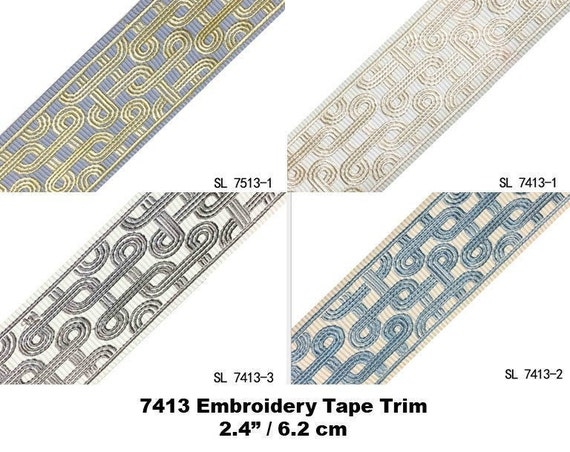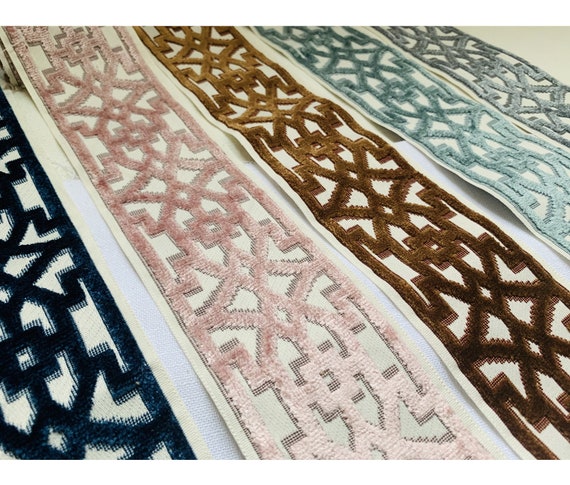When it comes to home decor, every detail matters, and one of the most delightful ways to add a touch of elegance and personality to your curtains is through decorative fabric trim. As someone who has dabbled in interior design for several years, I can confidently say that the right trim can transform a simple curtain into a stunning focal point in your living space. In this comprehensive guide, we will explore various types of decorative trim, their benefits, installation tips, and more, ensuring your curtains are not just functional but also stylish.
What is Decorative Fabric Trim?
Decorative fabric trim refers to the embellishments that can be added to the edges of curtains, drapes, or upholstery. These trims can range from simple piping and fringes to more complex lace and beaded designs. They serve both functional and aesthetic purposes, enhancing the visual appeal of your curtains while also providing durability.
Types of Decorative Fabric Trim
There are various types of decorative trim available, each offering unique characteristics and styles. Below, we’ll delve into some of the most popular options.
Piping
Piping is a cord encased in fabric, typically used to outline the edges of curtains or cushions. It provides a clean and finished look and can be made from a variety of fabrics.
Pros:
- Creates a tailored appearance.
- Available in various colors and patterns.

Cons:
- May require precise sewing skills for a professional finish.
- Can be more expensive than other trims.
Fringe
Fringe involves a series of hanging threads or tassels that add texture and movement to your curtains. It’s particularly popular for bohemian and vintage styles.

Pros:
- Offers a playful and dramatic effect.
- Available in various lengths and densities.
Cons:
- Can collect dust and dirt over time.
- May not suit all decor styles.

Lace Trim
Lace trim adds a delicate and romantic touch to curtains, making it ideal for bedrooms or spaces with a vintage vibe.
Pros:
- Softens the overall look of curtains.
- Available in many intricate designs.

Cons:
- Can be fragile and may require special cleaning.
- May not provide much privacy if used extensively.
Beaded Trim
Beaded trim adds a touch of glamour and sophistication. It’s typically made from small beads sewn onto a fabric strip, providing a point of interest.

Pros:
- Perfect for creating a luxurious look.
- Available in various colors and sizes.
Cons:
- Can be heavier and may affect how curtains hang.
- Requires careful handling to avoid damage.

How to Choose the Right Decorative Trim for Your Curtains
Selecting the appropriate trim for your curtains can greatly influence the overall decor of your room. Here are some tips I’ve learned throughout my personal journey in interior design:
Consider Your Curtain Style
Your choice of trim should complement the style of your curtains. For example, tailored curtains might look exquisite with piping, while sheer curtains may benefit from delicate lace trim.
Choose Colors Wisely
When selecting trim, consider the color palette of your room. You want the trim to either match and enhance the existing colors or provide a striking contrast that draws the eye.
Think About Functionality
Whether you want a decorative element, added durability, or both, you should choose a trim that serves a purpose in addition to its aesthetic appeal. For instance, fringes may not be the best for high-traffic areas unless you’re prepared to clean them regularly.

Installation Tips for Decorative Fabric Trim
Installing decorative trim can be a DIY project that’s both fun and rewarding. Here are some steps you can easily follow:
Gather Your Supplies
You will need a sewing machine, fabric scissors, pins, measuring tape, and your chosen trim. If you’re using adhesive trim, fabric glue will do just fine!
Measure Your Curtains
Before starting, measure how much trim you will need by laying it along the edges of your curtains. Make sure to account for corners and seams.
Pin the Trim
Starting from one end, pin the trim to the edge of the curtain, leaving a little overhang at both ends to fold under. This will give it a polished look.
Sew It On
Using a straight stitch, sew along the edge of the trim, making sure to keep it aligned with the curtain edge. If you’re using adhesive trim, follow the manufacturer’s instructions for application.
Finishing Touches
Once sewn, trim any excess thread and evaluate your work. A quick press with an iron can help smooth everything out for a professional finish.
Comparison Table of Decorative Fabric Trim Types
| Type of Trim | Appearance | Best For | Durability | Cost |
|---|---|---|---|---|
| Piping | Clean, tailored | Formal settings | High | Moderate |
| Fringe | Playful, textured | Bohemian styles | Medium | Low to Moderate |
| Lace Trim | Delicate, sophisticated | Vintage themes | Low | Moderate |
| Beaded Trim | Glamorous, luxurious | Formal occasions | Medium | High |
Personal Experiences with Decorative Trim
Throughout my years of experimenting with decorative trim, I remember one particular project that stands out. I had a simple white sheer curtain that felt overly plain in my bedroom. I decided to add a delicate lace trim along the bottom. The moment I finished, I was astounded by how such a small change made the entire room feel more inviting and serene. It was a simple afternoon project that added so much character.
Maintaining Decorative Fabric Trim
Taking care of your decorated curtains is essential for longevity. Here are some key tips:
Regular Dusting
Regularly dust the trim to prevent it from accumulating dirt and debris. A soft brush or lint roller can work wonders.
Gentle Washing
If your trim is washable, follow the care instructions on the label. Typically, a gentle cycle with mild detergent is best.
Avoid Direct Sunlight
Some trims can fade over time when exposed to direct sunlight. Consider using blackout curtains or liners to protect them.
FAQs About Decorative Fabric Trim for Curtains
What is the best type of trim for curtains?
The best type of trim for curtains varies based on personal style and the desired ambiance. Lace for a romantic feel, piping for a clean look, and fringe for playfulness are all great options.
How do I clean decorative trim on curtains?
Cleaning depends on the material. Most trims can be gently dusted, while others may require specific cleaning methods—always refer to the care instructions.
Can decorative trim be added to existing curtains?
Absolutely! You can easily add decorative trim to existing curtains, giving them a fresh new look without replacing them entirely.
Does decorative trim add to the cost of curtains?
Yes, adding decorative trim will increase the overall cost, but it can significantly enhance the aesthetic value of the curtains, making it a worthwhile investment.
Conclusion
Decorative fabric trim is an enchanting way to uplift your curtains and overall home decor. By understanding the different types, choosing wisely, and following proper installation and maintenance practices, you can create beautiful living spaces that reflect your personal style. Whether you’re going for a modern, chic look or a cozy, vintage vibe, the right trim can make all the difference. So, why not experiment with it today? Your curtains will thank you!